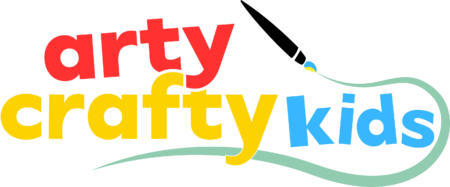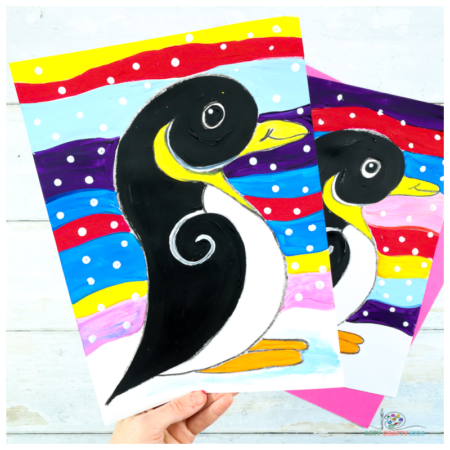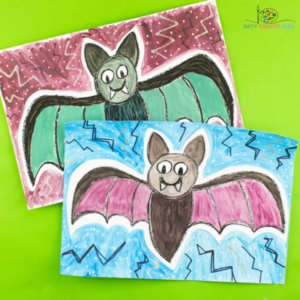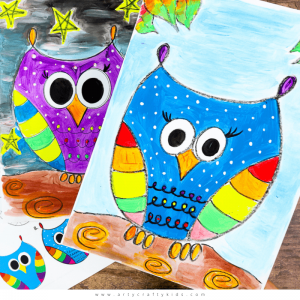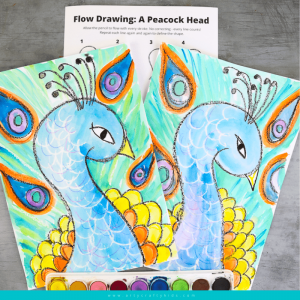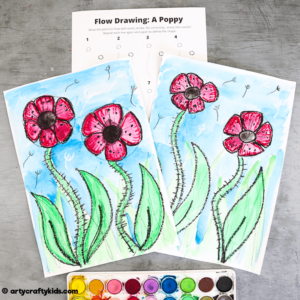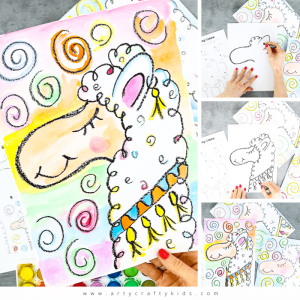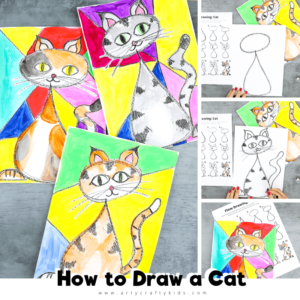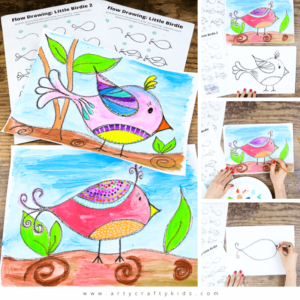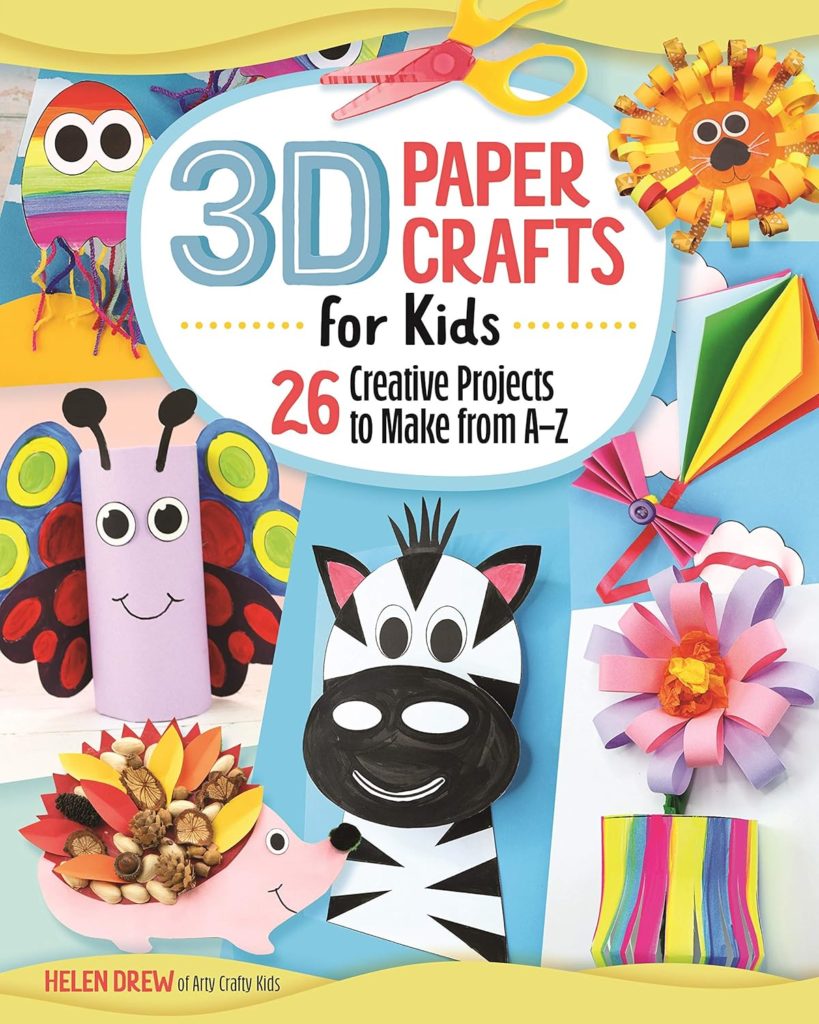Sharing is caring!
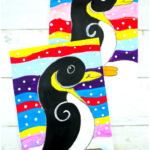
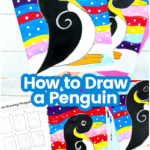
Teach your children how to draw a penguin in just 3 simple lines! This penguin is quick and easy for kids and beginners to draw and transform into a beautiful penguin painting!
Our penguin drawing is especially great for kids, which can be drawn with flowing, naturally forming lines and shapes.
Using our step-by-step guide as a reference point, children can adapt our tutorial to draw a realistic penguin or use the rounded shapes to continue with a cartoon style and finish – similar to the penguins featured in Happy Feet or the Madagascar films.
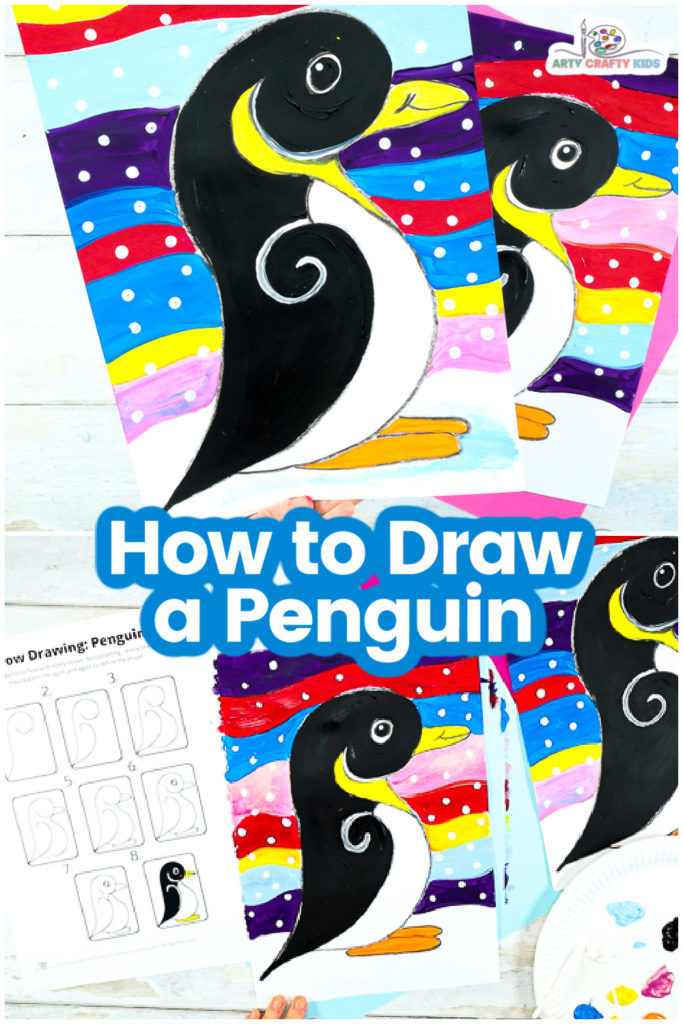
Your Arty Crafty Kids may also enjoy these Printable Penguin Coloring Pages.
- Easy Penguin How to Draw: A Step-by-Step Tutorial
- Watch the Drawing & Painting Tutorial:
- Let’s Draw a Penguin!
- Draw the First Line – The Penguin’s Head, Back and Tail
- Draw the Second Line – The Penguin’s Tail and Flipper
- Draw the Third Line – The Penguin’s Chest
- Draw the Penguin’s Beak
- Draw the Penguin’s Feet
- Let’s Paint the Penguin!
- Use a White Outline to Create Definition
- Design an Abstract Winter Backdrop
- Frame the Penguin with Bright Wintery Colors
- Paint Snowy Spots with a Q-Tip
- The Penguin How to Draw Tutorial is Complete!
- Let’s Draw a Penguin!
- Learn More about the Flow Drawing Technique:
- More How to Draw Tutorials for Kids:
Easy Penguin How to Draw: A Step-by-Step Tutorial
This is a fun, quick and easy penguin painting idea that’s perfectly suited to the classroom or at home.
With our video tutorial, printable step-by-step guide and written tutorial, your children will learn everything they need to know to complete this lovely Winter art project.
Materials:
- White Card Stock
- A Black Crayon, Oil Pastel or Pen
- Acrylic Paint OR a Favorite Medium for Coloring
- Eco Q-Tip
- Penguin Step-by-Step & Templates – Members will need to log in to access the templates
Not A Member?

Watch the Drawing & Painting Tutorial:
The video tutorial will guide children through the steps of creating their penguin and designing a winter background.
Let’s Draw a Penguin!
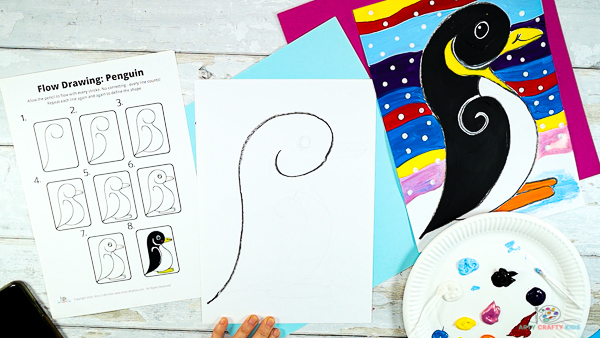
Draw the First Line – The Penguin’s Head, Back and Tail
The first line forms the penguin’s back, head and tail.
The line can be drawn in one big swooping motion that begins from the top of the page and ends near the bottom.
Similar to the beginning of a snail’s shell/ swirl, quickly expand the swirl and draw a line that gradually straightens and flicks out to form the tip of the tail.
Draw the line in one go or/and repeat the same line until the desired shape emerges.
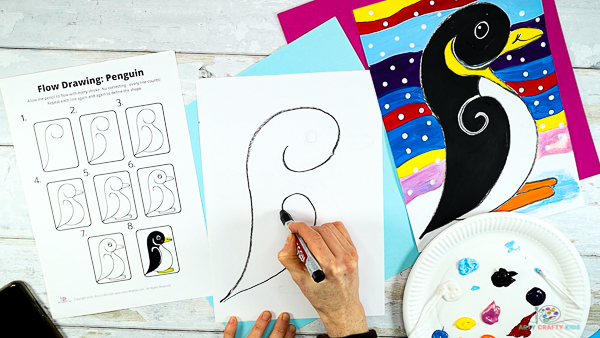
Draw the Second Line – The Penguin’s Tail and Flipper
Sketch a second line from the tip of the tail up towards the penguin’s head.
The shape of the second line will almost mirror the first; this time starting with a straight line that widens and bends into a swirl to create the penguin’s flipper.
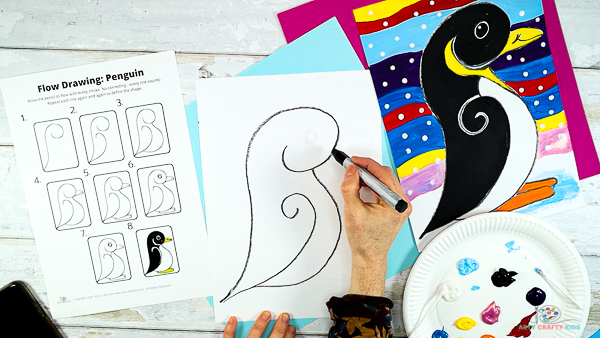
Draw the Third Line – The Penguin’s Chest
The third line completes the basic shape of the penguin, which simply connects the head and the tail, creating a nicely rounded tummy.
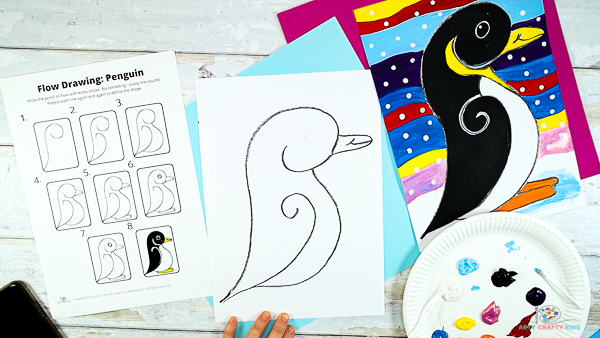
Draw the Penguin’s Beak
Now the basic shape of the penguin is complete, draw a small beak.
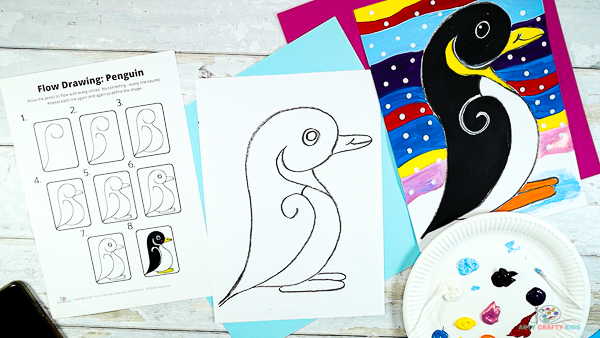
Draw the Penguin’s Feet
Draw a pair of feet in the shape of flattened ovals.
Add an eye and optional chest detail!
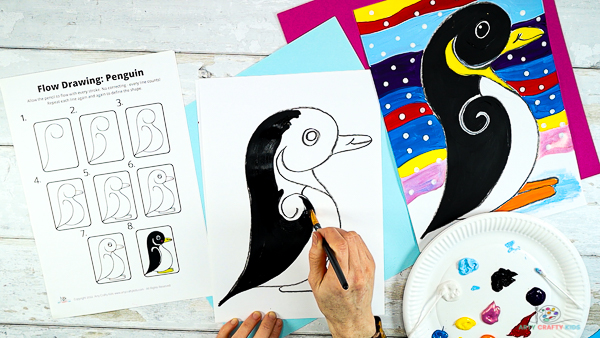
Let’s Paint the Penguin!
Apply a layer of thick black paint to the head and body of the penguin.
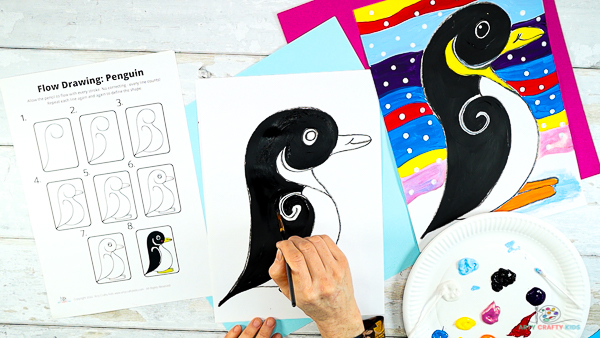
Use a White Outline to Create Definition
To add definition to the head and flipper, leave a small space around the swirly lines. This will help to separate the penguin’s features.
Apply a small layer of white paint over the swirls.
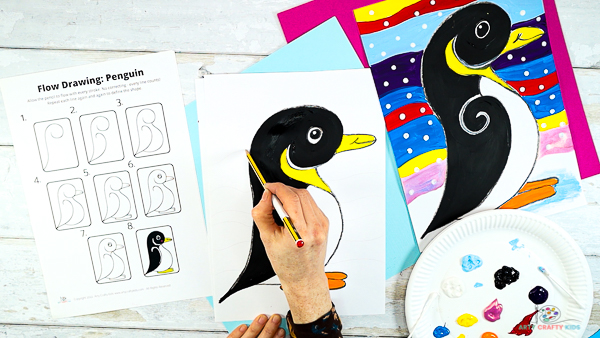
Design an Abstract Winter Backdrop
Children will now learn how to create a very simple abstract background.
Once the penguin is complete, use a pencil to draw a few waves from left to right of the page.
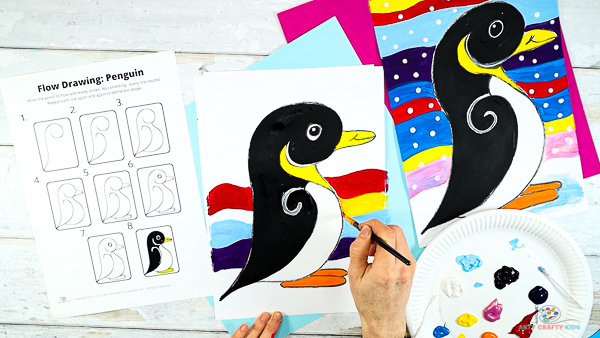
Frame the Penguin with Bright Wintery Colors
Next, fill the waves with bright bold colors.
Children may choose to create a pattern with their favorite colors or create a Winter feel to their painting with blue and purple hues.
This is a great opportunity to talk to Arty Crafty Kids about color and how they make them feel.
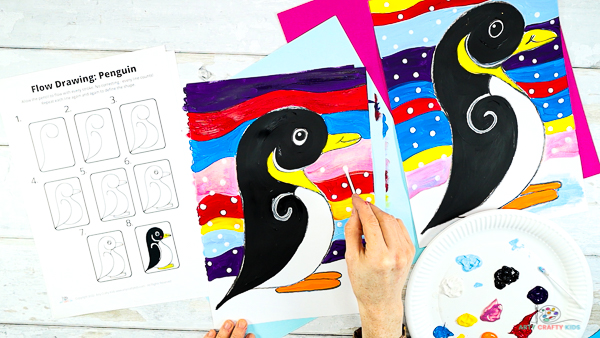
Paint Snowy Spots with a Q-Tip
Once the background is complete, use a q-tip or the end of a paintbrush/pencil to print lots of snowy spots.
The snowy spots will complete the wintery scene.
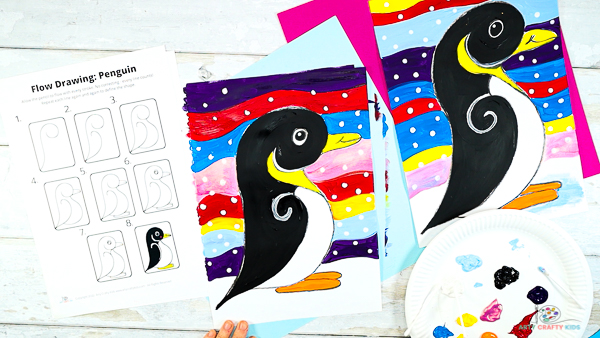
The Penguin How to Draw Tutorial is Complete!
I hope your Arty Crafty Kids enjoy this Penguin Painting and Drawing Step-by-Step Tutorial.
For more Winter themed drawing tutorials, take a look at How to Draw an Owl and How to Paint a Snowy Tree.
As always, we love to see your children’s completed works of art, so please do tag us on social media with your Arty Crafty Kids masterpieces!
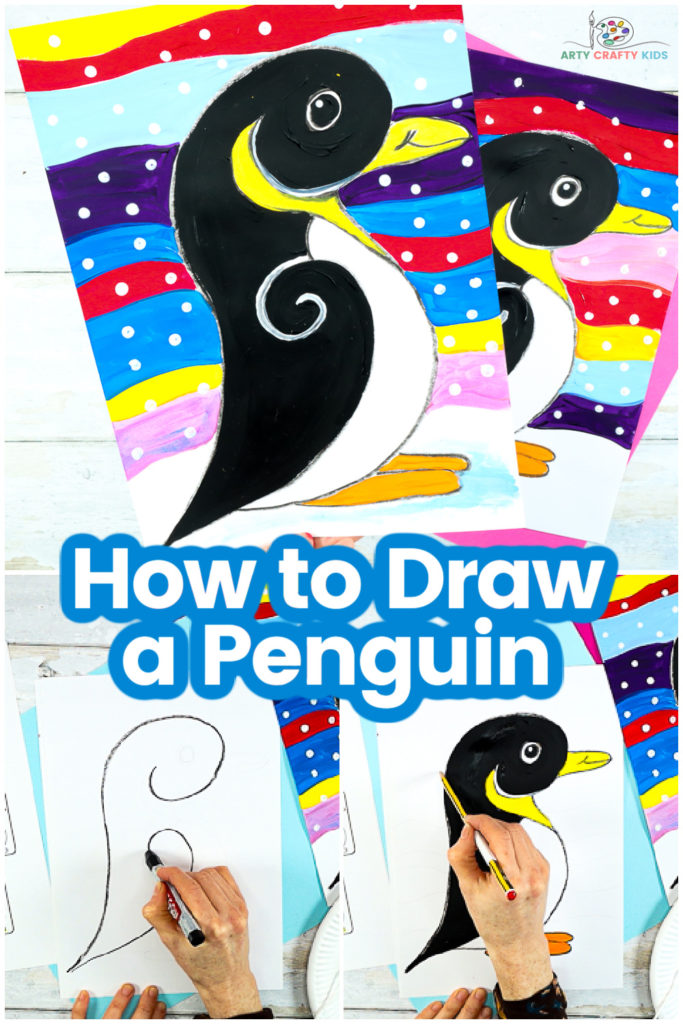
Learn More about the Flow Drawing Technique:
What is Flow Drawing?
Flow Drawing is an art technique developed by us to encourage children to understand shapes and create illustrations, in a much ‘freer’ way.
By removing restrictions, flow drawing encourages children to fully engage in the moment and discover their natural flow, making every line count and bringing mindfulness to their creative process.
You can think of the flow drawing technique as a ‘how to draw’ guide with a difference – children won’t just draw a picture, they’ll create a unique work of art, right from their soul.
Flow Drawing Benefits:
Although the process of flowing more naturally in art might seem a little alien to children at first, it’s really worth encouraging them to have a go.
Flow drawing has so many benefits and helps little hands and minds to:
- Explore simple shapes and how they work together to create larger forms
- Discover their natural flow and rhythm through repetitive movements
- Learn how to combine mediums, with a fun and easy approach
- Build confidence in their own creative ability
- Combat ‘perfection-seeking’ in art, providing a much needed alternative to rigid ‘how to draw’ guides
- Bring mindfulness to the creative process and boost mental health
- Foster a love of art and self-expression.
More How to Draw Tutorials for Kids:
Explore the fun of drawing and painting with our step-by-step tutorials and guides designed for kids!
Learn to create amazing art, from cute animals to beautiful flowers – all with easy-to-follow instructions.
